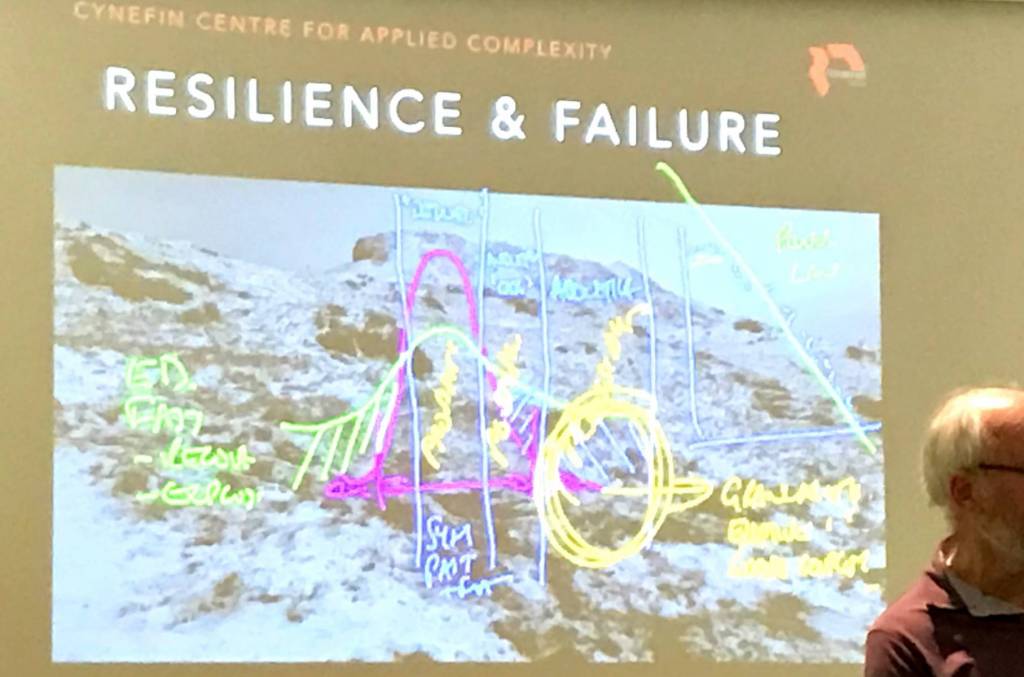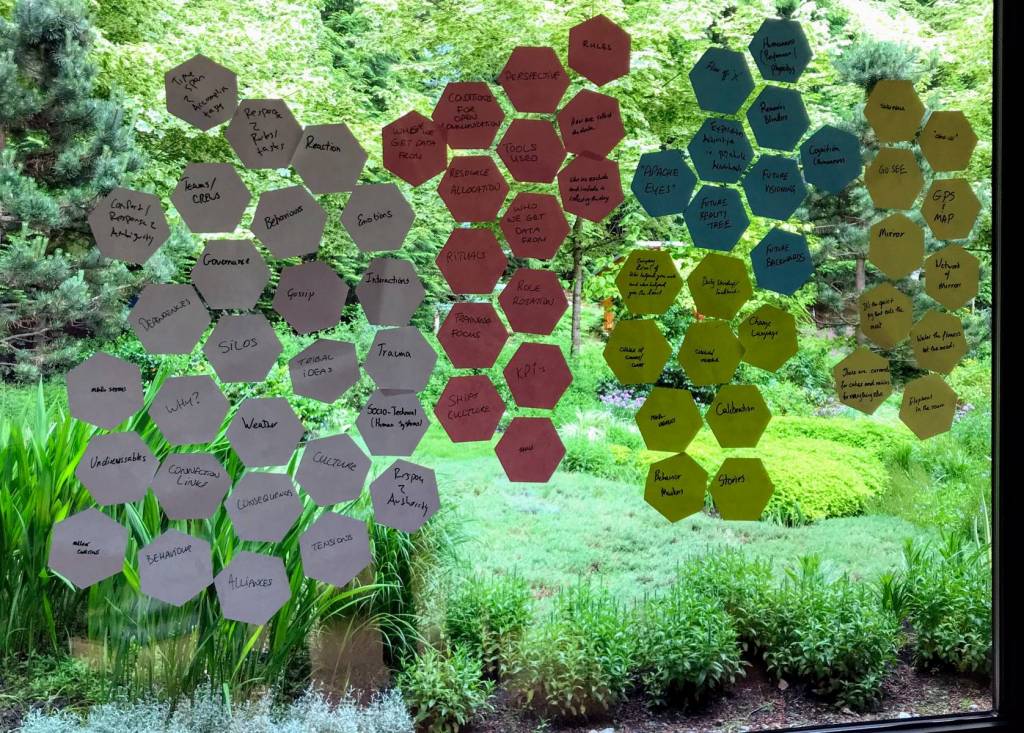After spending a week in Vancouver, BC, Canada, attending the Cynefin Retreat on organization design for emergence, I was moved to learn new ideas, leave some outdated concepts behind, and reinforce our progress together.

This made me think: How can you create more resilience to ideas and innovation within organizations?
Using an ecological viewpoint of Resilience within Organizations:
- “Ecological change is not continuous and gradual; Rather, it is episodic..” (Holling)
- “Ecosystems do not have single equilibria with functions controlled to remain near them. Rather destabilizing forces far from equilibria, multiple equilibria and disappearance of equilibria define functionally different states, and movement between states maintains structure and diversity.” (Holling)
From the above quotes, how can you think about change, innovation, and how it improves your organization’s resilience?
Thinking of your organization as an ecosystem, understanding that your organization’s people all have their values, beliefs, behaviors, quirks, and responses to authority. Their collective work and desire to be part of a team or group that completes goals and objectives.
The stabilizing, destabilizing pressure often comes from the leadership’s desire to make things simple and define clear objectives and goals with planning procedures. This defined project path always looks great when looking into the past at how the work got done or how we got here. However, when the complexity of your peers working together is happening, the destabilizing forces, multiple areas, and people that can keep work making progress and regress, along with people, resources, and time disappearing, creates a workplace where certainty cannot be counted on. A process of ambiguity (VUCA) can be helpful – this is how ecological communities work.

How to develop organizational resilience through time:
- Hold the team in questions, discussion, and exploration for as long as possible. Avoid agreement or convergence on an answer, action, or clear vision/goal statement. Agreement too early will build destructive groupthink, and generally, the loudest person will have their idea heard – this will make the idea fragile.
- When an idea or need presents itself, and there is an agreement that there is no best answer, ask your team to identify the extreme ends of the choice. You are creating a hyperbolic paradox that may frame the edges or boundaries of the challenge.
- Split the team into two diverse parts. One part takes one extreme, and the other party accepts the other extreme. With both extremes, ask the group to research and learn more about their piece. The research is to discover and clarify what questions they may have for the team as a whole, the other team, and those affected, and show the supporting and hindering factors the idea creates. They are not looking for an answer or direct action to take.
- When the whole team returns, create a third group of members from both sides. You are looking for a healthy variety.
- Each team shares its findings. The third team (with mixed team members) listens and takes notes, then they speak about what they heard – What was useful? What reinforced their belief? What surprised them? How is their thinking different? The other teams listen …
- Mix all the team members into three (or more) new groups. Preferably these groups are less than 6 members per/team.
- In the new groups, ask them to write a Problem Statement; What is Distinctive about this challenge; 1 to 3 safe-to-fail experiments or projects the team could attempt. You are now asking them to make some choices.
- Have the teams post-it note the responses above and briefly share their answers. You are now moving into a different cohesion of groupthink … you have held the team from deciding until they have heard multiple views and broken some inertia in their thinking.
- Choose some safe-to-fail experiments to try and determine who and how this will happen.
- Make a date for the safe-to-fail project teams to meet with the larger group and share what they have learned, what is working well to amplify, and what is not working well to dampen. Once the idea leaves the room, they are resilient and will adapt/evolve as they enter the workplace …. which is expected and part of the process.
All the steps above construct more resilient ideas and build intrinsic motivation for innovation and your organization’s progress. Removing the belief that challenges need an orderly project plan with goals and objectives that you can move toward is not always the best option. When you create too much order within a complex workplace challenge, you are enlarging the problem and setting people back from using their minds and autonomy to be engaged in the work.
Organizational Resilience happens with time, disruption, and people collecting what works to increase and what does not work to decrease – starting with where you are and walking together to where you can be.

